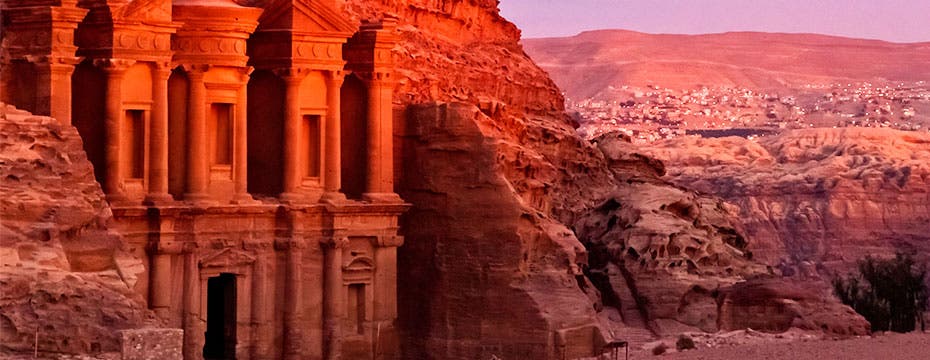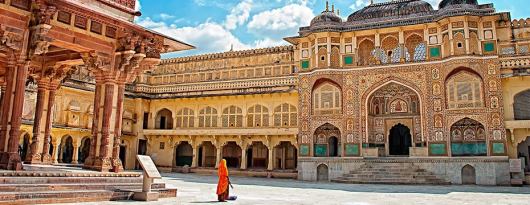Lost City of Petra: the ancient city in Jordan

Considered to be one of the top ‘see before you die’, another travel bucket list destinations such as Iguazu Falls, Petra is shrouded in mystery, legend, and admiration for this fantastic architectural feat.
Located in Wadi Musa, Jordan, Petra is the famous rose-sandstone city, carved into the dusty mountains and has stood in all its majesty since the time of the Nabataeans, a civilization of ancient Arabic peoples. It is thought to have been built around 312BC and was rediscovered in modern times by a Swiss explorer in 1812, who uncovered Petra beneath ancient layers of sand, hence the nickname, Lost City. The name Petra is derived from the Greek word ‘petros’ meaning rock and since 1985, the ancient city of Petra has been a UNESCO World Heritage Site, welcoming intrepid visitors from all over the world who are attracted by the wonder of this special insight into ancient times.

Although the first images that spring to mind when one thinks of Petra are of the glorious façade of the Pharaoh’s Treasury Mausoleum, as seen in Hollywood blockbusters such as Indiana Jones and The Mummy Returns, there is more to Petra than the intricately carved buildings that can be seen from the outside. Inside the rocks, the city sprawls out across tunnels and whole rooms materialize inside of the sandstone, their walls marbled with the red and orange hues of the natural rock. More than 500 buildings survive in the ancient city of Petra today, mostly tombs and mausoleums alongside the fantastically impressive Treasury and the huge Monastery.

Despite being situated in a deep canyon in the isolation of Wadi Musa, standing beside the impressive columns of the Treasury ignites feelings of being transported to an ancient city plaza and it is easy to imagine the daily hustle and bustle that would have once characterized this Holy city. It was a very precious site in the years of its inhabitation and held many priceless artifacts, religious pieces and treasures. Sadly, after a series of severe earthquakes around 1BC and 8AD, Petra was raided, half the city was destroyed and most of these ancient treasures were stolen from the site. The site was left essentially abandoned by the end of the Byzantine period.
Over 200 years have passed since the rediscovery of the Lost City, but still, archaeologists are uncovering the sheer magnitude of the site. In 2016, satellite imagery found a previously undiscovered monumental structure hidden beneath the vast sands of Petra. Archaeologists have theorized that the newly revealed structure most likely had a ceremonial function, as it consists of a large platform, or stage, and is unique in contrast to any other of the buildings currently standing in Petra. It goes to show that history is still being written for this magnificent ‘Rock City’.

When visiting this ancient city in Jordan, Petra, take into consideration the sheer size of the Archaeological Park itself, which is set in over 2,500 acres and make sure you give yourself plenty of time to see all the highlights, and if time allows, why not explore further and venture off from the beaten path. No motor vehicles are permitted within the site, although horse carts, donkeys and camels are available if you want to feel like a real Petran! Photographers are always deeply enthused at the prospect of visiting Petra; as the wonderful array of colours from the rock and the gentle lights come late afternoon give themselves to the most fantastic atmospheric photo opportunities. Jordan is an exciting and infinitely interesting destination to visit, but Petra is a truly the highlight for anyone with an admiration for the romance of ancient times.








Comments are closed.